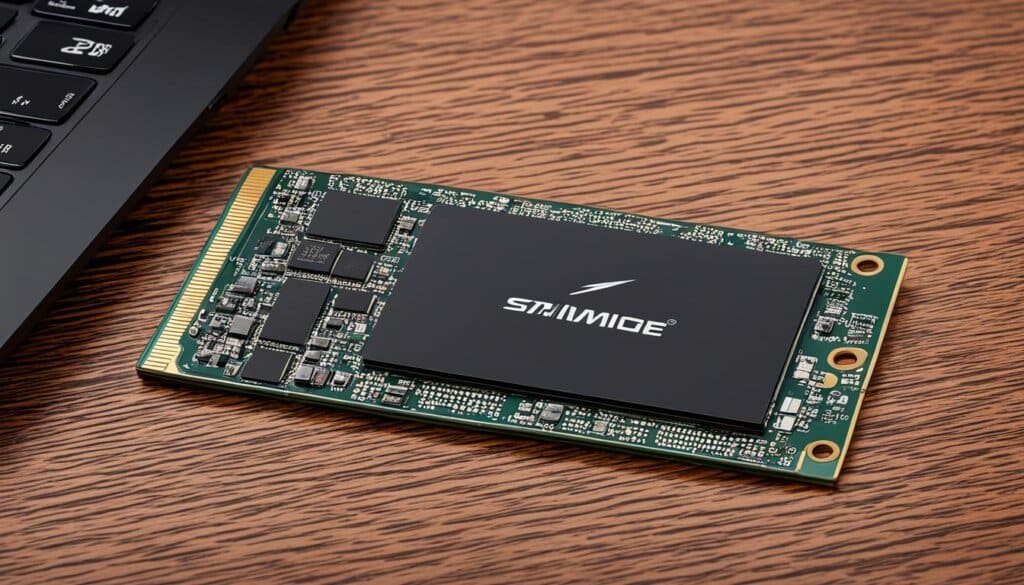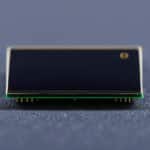Table of Contents
An M.2 SSD, short for solid-state drive, is a storage expansion card that offers high-performance storage in thin and power-constrained devices, such as ultrabook laptops and tablets. Unlike traditional hard disk drives, M.2 SSDs have no moving parts, making them more durable and reliable.
M.2 SSDs come in a smaller form factor compared to other SSDs like mSATA. They are designed to fit into M.2 slots on motherboards and support multiple protocols and applications, including PCIe and SATA. This versatility allows them to be used in various devices, from personal computers to graphics cards.
Using an M.2 SSD can significantly improve storage speed and overall system performance. They offer faster boot and load times, increasing productivity and reducing wait times. Additionally, M.2 SSDs take up less space and consume less power, making them ideal for smaller devices.
How does an M.2 SSD work?
An M.2 SSD integrates with devices like Wi-Fi and Bluetooth through M.2 modules. These small form factor solid-state drives (SSDs) can be used with both SATA and PCIe protocols, offering flexibility in terms of compatibility and performance. SATA-based M.2 SSDs provide reliable storage solutions, while PCIe-based M.2 SSDs deliver faster data transfer speeds.
M.2 SSDs can also support NVMe (Non-Volatile Memory Express) drives, which offer even greater performance and improved parallel processing for read and write requests. NVMe allows faster data transfers between the SSD and the system, resulting in reduced latency and faster application loading times.
The M.2 form factor itself comes in different sizes, such as 22 mm x 60 mm and 22 mm x 80 mm, offering options to fit various devices and requirements. These M.2 SSDs can be single-sided or double-sided, depending on the number of NAND flash memory chips they accommodate.
The M.2 module keys, known as B keys and M keys, determine the number of PCIe lanes the socket supports. B keys have one or two lanes, while M keys can support up to four lanes. The number of PCIe lanes affects the data transfer rate between the M.2 SSD and the system, with more lanes allowing for faster speeds.
Overall, M.2 SSDs offer a compact and efficient storage solution, enhancing the performance of devices with their high-speed data transfer capabilities and compatibility with different protocols.
“M.2 SSDs integrate seamlessly with devices through M.2 modules, supporting both SATA and PCIe protocols. They can also leverage NVMe technology for enhanced performance and faster data transfer speeds.”
M.2 SSD Features and Specifications
| Form Factor | Size (Width x Length) | Supported Protocols | Key Types | Number of PCIe Lanes |
|---|---|---|---|---|
| M.2 | 22 mm x 60 mm | SATA, PCIe | B key | 1 or 2 |
| 22 mm x 80 mm | M key |
M.2 SSD Pros and Cons
When considering M.2 SSDs, it’s important to understand the advantages and disadvantages. Let’s take a closer look at the pros and cons of these storage solutions.
Pros of M.2 SSDs

- Small Size: M.2 SSDs are compact, taking up less space than traditional hard drives. This makes them ideal for laptops and small form factor PCs.
- High Capacity: Despite their small size, M.2 SSDs offer ample storage capacity. They are available in various capacities, ranging from 256 GB to 2 TB, allowing users to store large amounts of data.
- Improved Performance: M.2 SSDs deliver faster boot and load times, as well as increased system responsiveness. This means quicker access to files and applications, improving overall user experience.
Cons of M.2 SSDs
- Higher Price: M.2 SSDs can be more expensive than SATA SSDs. However, the price difference is often justified by their superior performance and smaller form factor.
- Limited Storage Capacities: Compared to larger form factors, M.2 SSDs have limited storage capacities. While they are sufficient for most mobile applications, enterprise storage systems may require higher capacities.
In summary, M.2 SSDs offer the benefits of small size, high capacity, and improved performance. However, they can be more expensive and have storage limitations compared to other form factors. Consider your specific needs and budget when choosing an M.2 SSD for your device.
What are the buying options for M.2 SSD?
When it comes to buying an M.2 SSD, there are a variety of options available on the market. Two popular models to consider are the Adata XPG SX8200 Pro and the Samsung 970 EVO Plus. These SSDs not only offer impressive storage capacities ranging from 256 GB to 2 TB, but they also deliver exceptional read and sequential write speeds.
For example, the Adata XPG SX8200 Pro can reach speeds of up to 3,500 MB/s read and 3,000 MB/s write, while the Samsung 970 EVO Plus offers similar performance specifications. These high speeds ensure faster data access and improved system responsiveness, making them ideal for demanding tasks such as gaming, content creation, and data-intensive applications.
When considering your purchasing options, it’s important to remember that prices for M.2 SSDs vary depending on the storage capacity and brand. As a general guideline, 2TB options typically range from $150 to $200. However, it’s worth mentioning that the overall price range may fluctuate over time due to market demand and product availability.
| Brand | Model | Storage Capacity | Read Speed | Write Speed |
|---|---|---|---|---|
| Adata | XPG SX8200 Pro | 256 GB – 2 TB | Up to 3,500 MB/s | Up to 3,000 MB/s |
| Samsung | 970 EVO Plus | 256 GB – 2 TB | Up to 3,500 MB/s | Up to 3,300 MB/s |
Both the Adata XPG SX8200 Pro and the Samsung 970 EVO Plus offer exceptional performance and reliability, making them popular choices among users looking to enhance their storage capabilities. With their impressive storage capacities and fast data transfer rates, these M.2 SSDs provide a great balance between storage space and speed.
Investing in a high-quality M.2 SSD can greatly improve your system’s overall performance, whether it’s for gaming, multimedia editing, or everyday computing tasks. Make sure to consider your specific needs and budget when choosing the ideal M.2 SSD for your setup.
How Do You Choose an M.2 SSD?
When selecting an M.2 SSD, it is vital to consider the compatibility of the drive with your system and the specific features you require. Begin by checking whether your motherboard has an available M.2 slot and whether it supports the SATA or NVMe protocols. If your motherboard lacks an M.2 slot, you can explore the option of using an M.2 drive on a card that can be connected through your PCIe slots.
If your usage primarily involves daily tasks and gaming, it is recommended to opt for SATA-based M.2 SSDs. These drives offer excellent performance and compatibility for typical computing needs. On the other hand, if you engage in more demanding tasks such as 4K video editing, NVMe-based SSDs are preferable. NVMe-based drives provide faster data transfer speeds, enabling quicker access to large files and enhanced overall system performance.
Also, take into account the capacity, speed, and price of the M.2 SSD. Determine the required storage capacity based on your needs and budget. It is essential to strike a balance between capacity and cost-effectiveness. Consider the speed specifications of the SSD, as this will influence both read and write performance. Faster speeds can significantly enhance your overall computing experience.
By carefully examining the compatibility, protocols, and features of an M.2 SSD, it is possible to identify the ideal storage solution that fits your specific requirements and offers optimal performance for your system.
FAQ
What is an M.2 SSD?
An M.2 SSD is a small form factor solid-state drive (SSD) used for internally mounted storage expansion cards in devices like ultrabook laptops and tablets.
How does an M.2 SSD work?
An M.2 SSD integrates with devices through M.2 modules and can support protocols like SATA and PCIe. It can also support NVMe drives for higher performance and improved parallel processing.
What are the pros and cons of using an M.2 SSD?
Some benefits of using an M.2 SSD include its small size, high capacity, and improved performance. However, they can be more expensive than SATA SSDs and have limited storage capacities compared to larger form factors.
What are the buying options for M.2 SSDs?
Some popular M.2 SSD options include Adata XPG SX8200 Pro and Samsung 970 EVO Plus. These SSDs offer different storage capacities and impressive read and sequential write speeds.
How do you choose an M.2 SSD?
When choosing an M.2 SSD, consider the compatibility with your system, the protocols supported (SATA or NVMe), the capacity, speed, and price of the SSD.












